Abstract
The age-related acquisition of serum anticapsular and bactericidal antibodies to Haemophilus influenzae type b observed in rats was similar to that of humans. The antigenic source for this "natural" immunity was not identified since neither pharyngeal infection with H. influenzae b nor enteric colonization by cross-reacting bacteria was detected. Infant rats surviving H. influenzae b bacteremia failed to respond immunologically to the capsular polysaccharide. However, surviving rats demonstrated no impairment of immune responsiveness to this antigen after subsequent immunization with live bacteria in adulthood. In passive protection experiments, antibodies directed against the type b capsular polysaccharide represented the major protective specificity. However, a small protective effect of antibodies to noncapsular antigens also appeared to have been demonstrated.
Full text
PDF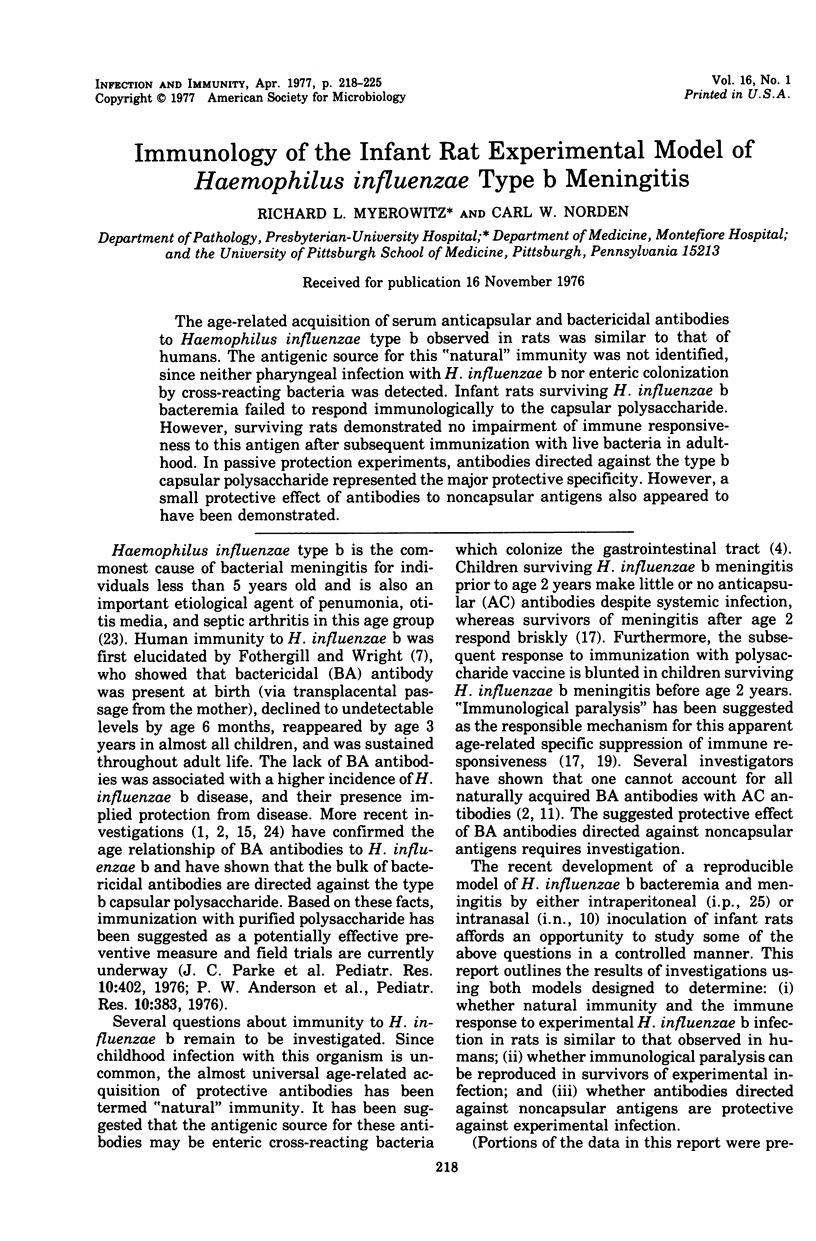
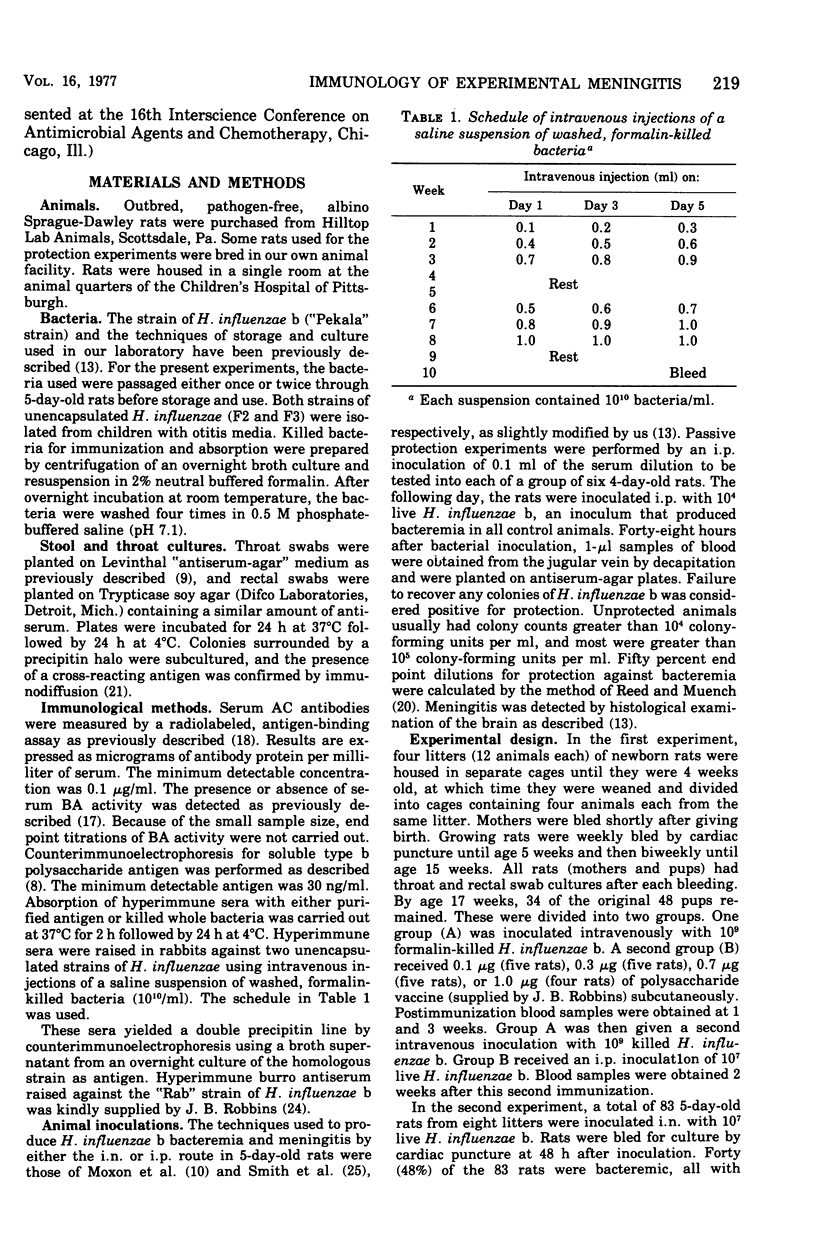
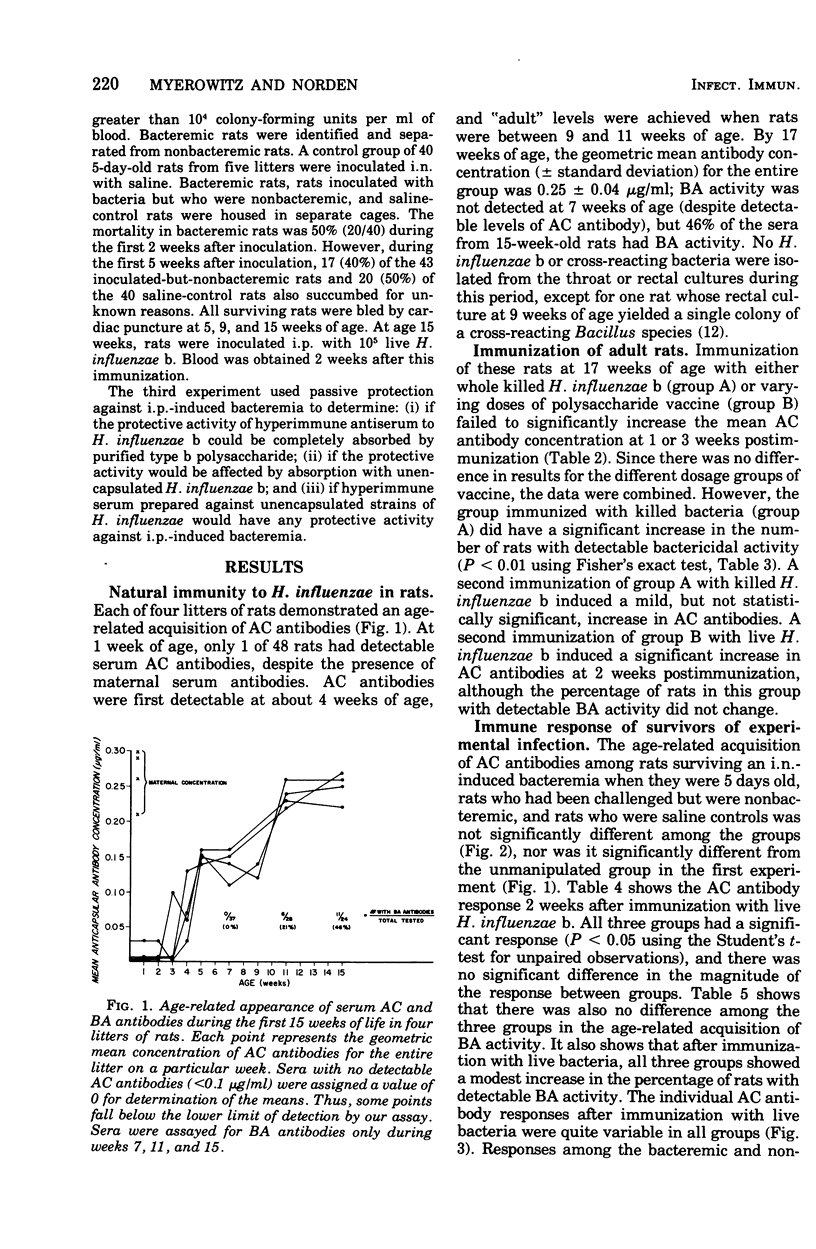
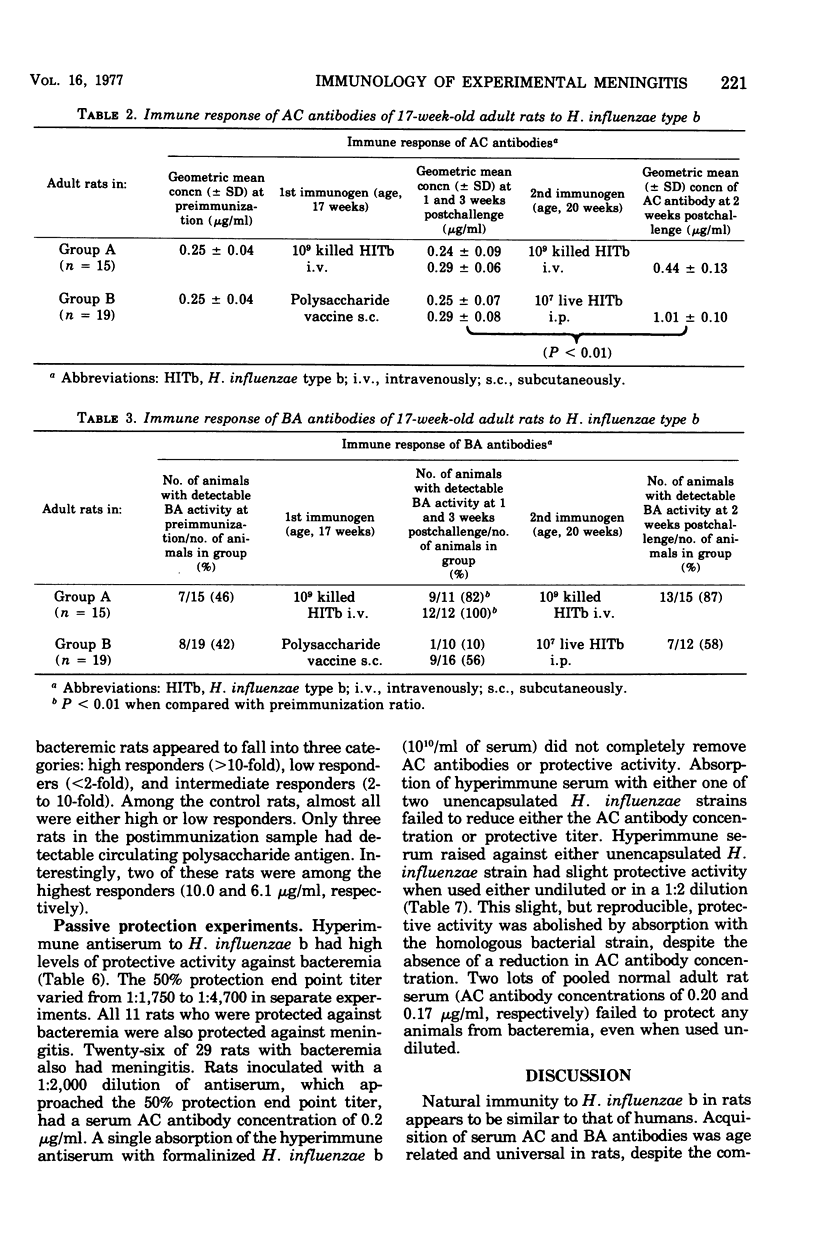
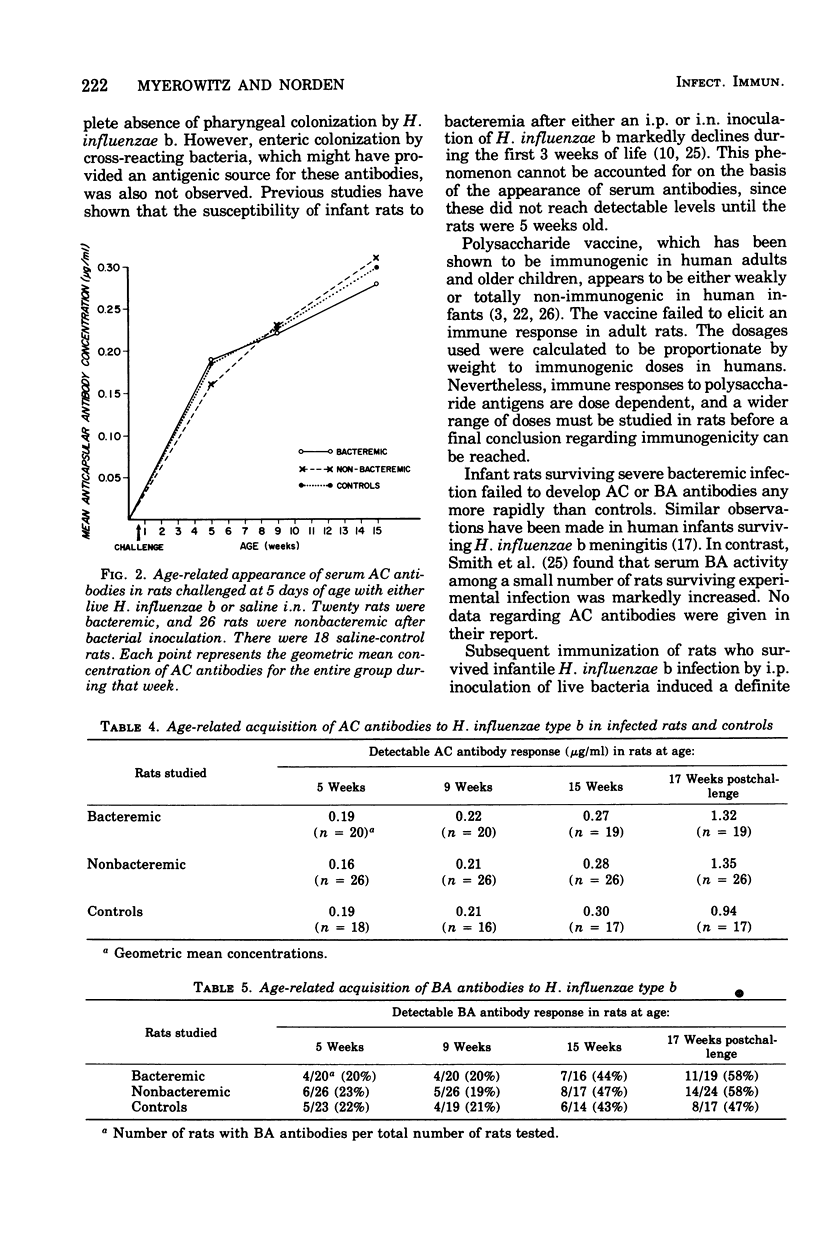
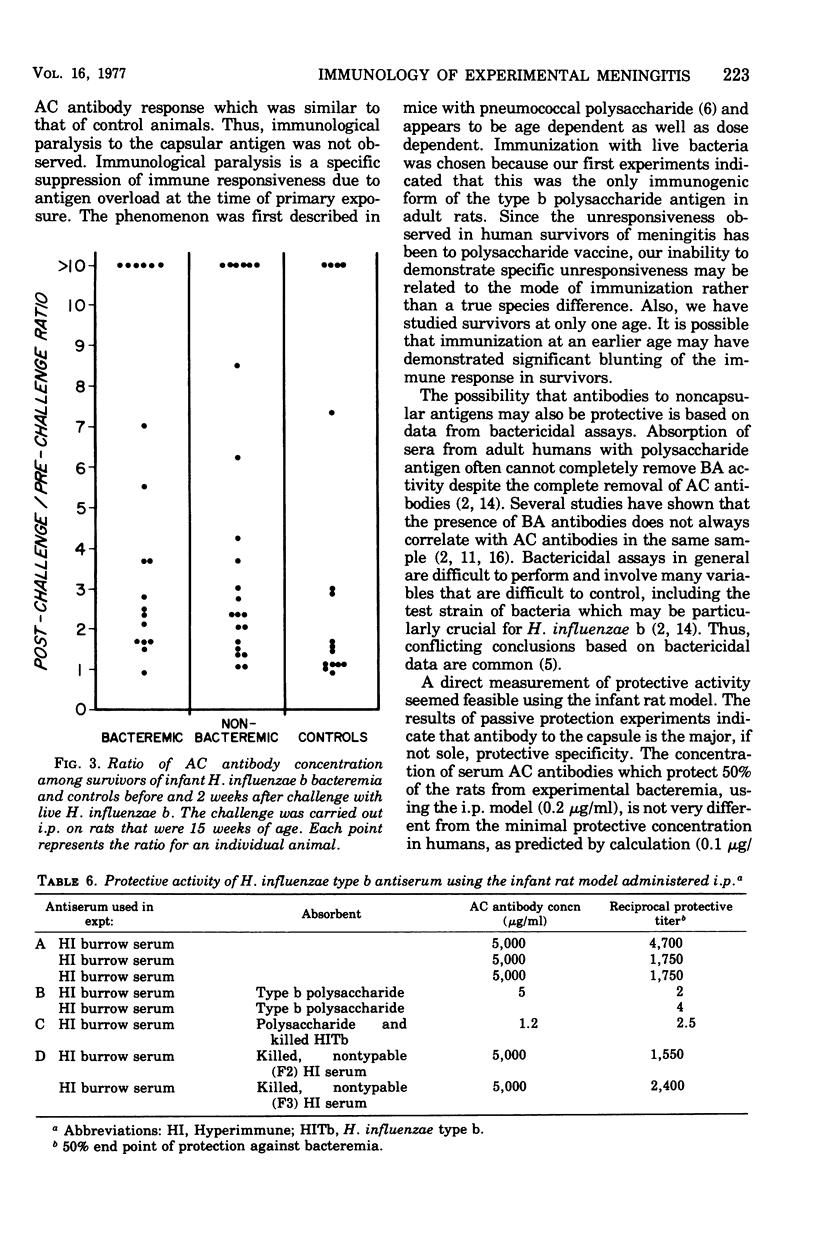
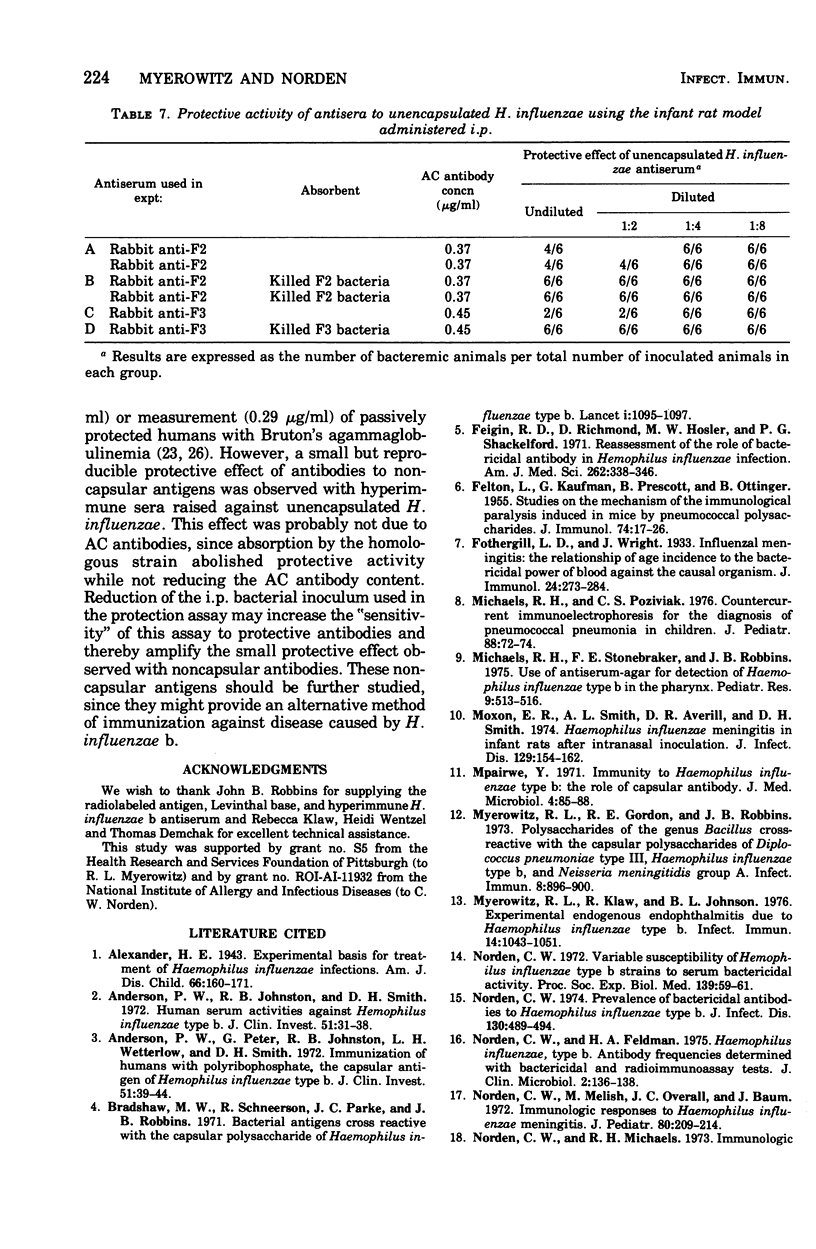
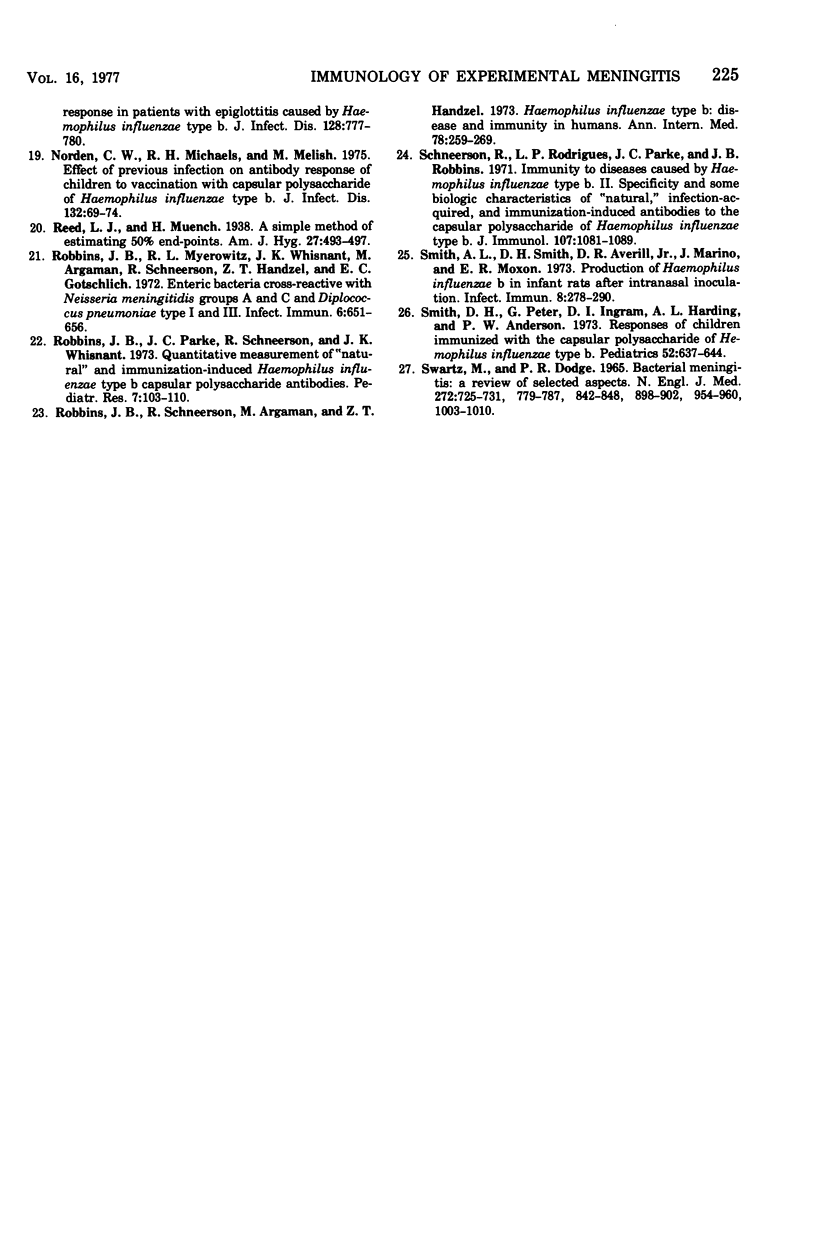
Selected References
These references are in PubMed. This may not be the complete list of references from this article.
- Anderson P., Johnston R. B., Jr, Smith D. H. Human serum activities against Hemophilus influenzae, type b. J Clin Invest. 1972 Jan;51(1):31–38. doi: 10.1172/JCI106793. [DOI] [PMC free article] [PubMed] [Google Scholar]
- Anderson P., Peter G., Johnston R. B., Jr, Wetterlow L. H., Smith D. H. Immunization of humans with polyribophosphate, the capsular antigen of Hemophilus influenzae, type b. J Clin Invest. 1972 Jan;51(1):39–44. doi: 10.1172/JCI106794. [DOI] [PMC free article] [PubMed] [Google Scholar]
- Bradshaw M. W., Schneerson R., Parke J. C., Jr, Robbins J. B. Bacterial antigens cross-reactive with the capsular polysaccharide of Haemophilus influenzae type b. Lancet. 1971 May 29;1(7709):1095–1096. doi: 10.1016/s0140-6736(71)91837-x. [DOI] [PubMed] [Google Scholar]
- FELTON L. D., KAUFFMANN G., PRESCOTT B., OTTINGER B. Studies on the mechanism of the immunological paralysis induced in mice by pneumococcal polysaccharides. J Immunol. 1955 Jan;74(1):17–26. [PubMed] [Google Scholar]
- Feigin R. D., Richmond D., Hosler D. W., Shackelford P. G. Reassessment of the role of bactericidal antibody in Hemophilus influenzae infection. Am J Med Sci. 1971 Dec;262(6):338–346. doi: 10.1097/00000441-197112000-00005. [DOI] [PubMed] [Google Scholar]
- Haemophilus influenzae type b: disease and immunity in humans. Ann Intern Med. 1973 Feb;78(2):259–269. doi: 10.7326/0003-4819-78-2-259. [DOI] [PubMed] [Google Scholar]
- Michaels R. H., Poziviak C. S. Countercurrent immunoelectrophoresis for the diagnosis of pneumococcal pneumonia in children. J Pediatr. 1976 Jan;88(1):72–74. doi: 10.1016/s0022-3476(76)80730-5. [DOI] [PubMed] [Google Scholar]
- Michaels R. H., Stonebraker F. E., Robbins J. B. Use of antiserum agar for detection of Haemophilus influenzae type b in the pharynx. Pediatr Res. 1975 May;9(5):513–516. doi: 10.1203/00006450-197505000-00010. [DOI] [PubMed] [Google Scholar]
- Moxon E. R., Smith A. L., Averill D. R., Smith D. H. Haemophilus influenzae meningitis in infant rats after intranasal inoculation. J Infect Dis. 1974 Feb;129(2):154–162. doi: 10.1093/infdis/129.2.154. [DOI] [PubMed] [Google Scholar]
- Mpairwe Y. Immunity to Haemophilus influenzae type B: the role of the capsular antibody. J Med Microbiol. 1971 Feb;4(1):85–88. doi: 10.1099/00222615-4-1-85. [DOI] [PubMed] [Google Scholar]
- Myerowitz R. L., Gordon R. E., Robbins J. B. Polysaccharides of the genus Bacillus cross-reactive with the capsular polysaccharides of Diplococcus pneumoniae type 3, Haemophilus influenzae type b, and Neisseria meningitidis group A. Infect Immun. 1973 Dec;8(6):896–900. doi: 10.1128/iai.8.6.896-900.1973. [DOI] [PMC free article] [PubMed] [Google Scholar]
- Myerowitz R. L., Klaw R., Johnson B. L. Experimental endogenous endophthalmitis caused by Haemophilus influenzae type b. Infect Immun. 1976 Oct;14(4):1043–1051. doi: 10.1128/iai.14.4.1043-1051.1976. [DOI] [PMC free article] [PubMed] [Google Scholar]
- Norden C. W., Feldman H. A. Hemophilus influenzae, type b, antibody frequencies determined with bactericidal and radioimmunoassay tests. J Clin Microbiol. 1976 Aug;2(2):136–138. [PMC free article] [PubMed] [Google Scholar]
- Norden C. W., Melish M., Overall J. C., Jr, Baum J. Immunologic responses to Hemophilus influenzae meningitis. J Pediatr. 1972 Feb;80(2):209–214. doi: 10.1016/s0022-3476(72)80580-8. [DOI] [PubMed] [Google Scholar]
- Norden C. W., Michaels R. H., Melish M. Effect of previous infection on antibody response of children to vaccination with capsular polysaccharide of Haemophilus influenzae Type b. J Infect Dis. 1975 Jul;132(1):69–74. doi: 10.1093/infdis/132.1.69. [DOI] [PubMed] [Google Scholar]
- Norden C. W., Michaels R. Immunologic response in patients with epiglottitis caused by Haemophilus influenzae type b. J Infect Dis. 1973 Dec;128(6):777–780. doi: 10.1093/infdis/128.6.777. [DOI] [PubMed] [Google Scholar]
- Norden C. W. Prevalence of bactericidal antibodies to Haemophilus influenzae, type b. J Infect Dis. 1974 Nov;130(5):489–494. doi: 10.1093/infdis/130.5.489. [DOI] [PubMed] [Google Scholar]
- Norden C. W. Variable susceptibility of Hemophilus influenzae, type B strains to serum bactericidal activity. Proc Soc Exp Biol Med. 1972 Jan;139(1):59–61. doi: 10.3181/00379727-139-36076. [DOI] [PubMed] [Google Scholar]
- Robbins J. B., Myerowitz L., Whisnant J. K., Argaman M., Schneerson R., Handzel Z. T., Gotschlich E. C. Enteric bacteria cross-reactive with Neisseria meningitidis groups A and C and Diplococcus pneumoniae types I and 3. Infect Immun. 1972 Nov;6(5):651–656. doi: 10.1128/iai.6.5.651-656.1972. [DOI] [PMC free article] [PubMed] [Google Scholar]
- Robbins J. B., Parke J. C., Jr, Schneerson R., Whisnant J. K. Quantitative measurement of "natural" and immunization-induced Haemophilus influenzae type b capsular polysaccharide antibodies. Pediatr Res. 1973 Mar;7(3):103–110. doi: 10.1203/00006450-197303000-00001. [DOI] [PubMed] [Google Scholar]
- SWARTZ M. N., DODGE P. R. BACTERIAL MENINGITIS--A REVIEW OF SELECTED ASPECTS. 1. GENERAL CLINICAL FEATURES, SPECIAL PROBLEMS AND UNUSUAL MENINGEAL REACTIONS MIMICKING BACTERIAL MENINGITIS. N Engl J Med. 1965 Apr 8;272:725–CONTD. doi: 10.1056/NEJM196504082721406. [DOI] [PubMed] [Google Scholar]
- Schneerson R., Rodrigues L. P., Parke J. C., Jr, Robbins J. B. Immunity to disease caused by Hemophilus influenzae type b. II. Specificity and some biologic characteristics of "natural," infection-acquired, and immunization-induced antibodies to the capsular polysaccharide of Hemophilus influenzae type b. J Immunol. 1971 Oct;107(4):1081–1089. [PubMed] [Google Scholar]
- Smith A. L., Smith D. H., Averill D. R., Jr, Marino J., Moxon E. R. Production of Haemophilus influenzae b meningitis in infant rats by intraperitoneal inoculation. Infect Immun. 1973 Aug;8(2):278–290. doi: 10.1128/iai.8.2.278-290.1973. [DOI] [PMC free article] [PubMed] [Google Scholar]
- Smith D. H., Peter G., Ingram D. L., Harding A. L., Anderson P. Responses of children immunized with the capsular polysaccharide of Hemophilus influenzae, type b. Pediatrics. 1973 Nov;52(5):637–644. [PubMed] [Google Scholar]


